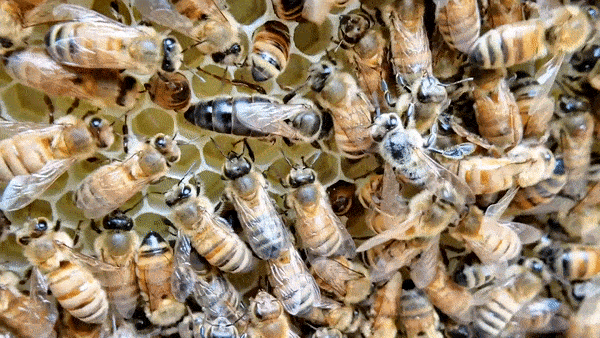Western Honey Bees waste no opportunity to become the media's darling by either complaining about their colony collapse or the threats they face by the invading Asian giant hornets.
Whether you love these bees for pollinating your almonds or loathe them for working as illegal immigrants, you can't deny that these are fascinating insects.
For starters, Honey Bees have to keep the temperature in their hives just right(like how I prefer my shower temperature)
This is to ensure the honey does not get dehydrated too quickly and the baby bees don't wake up from their naps.
This is a task everyone plays a role in, you see unlike humans who will heat the entire house even if they watch netflix in one room, bees will keep the center of the cluster the warmest.
The bees will constantly shuffle places so the bees on the outside will move towards the center and the ones in the center will start inching towards the edges. This maintains a uniform temperature in the hive all the time.
Below is a difference of 13°F from the edges towards the center.
Also if you ever get a chance to look at a hive, like I did with a local beekeeper, observe how some bees will stand at the entrance of the hive constantly beating their wings to circulate the air inside the hive.
Seen below are some of the bees doing the same.
The landing area of the hive is reminiscent of airport runways where bees take off and land.
Below is a bee spreading its legs to land gracefully before hitting the landing strip.
Finally how to spot a queen in the colony?
Simple, look for the one bee that other bees are not constantly bumping into and gets the right of the way every time.
Also the longer abdomen, darker colors and slightly bigger size gives it away.
Below is one checking which part of the hive are the hot yoga classes about to start.





Those are the best-looking bees I think I have ever seen...
ReplyDelete